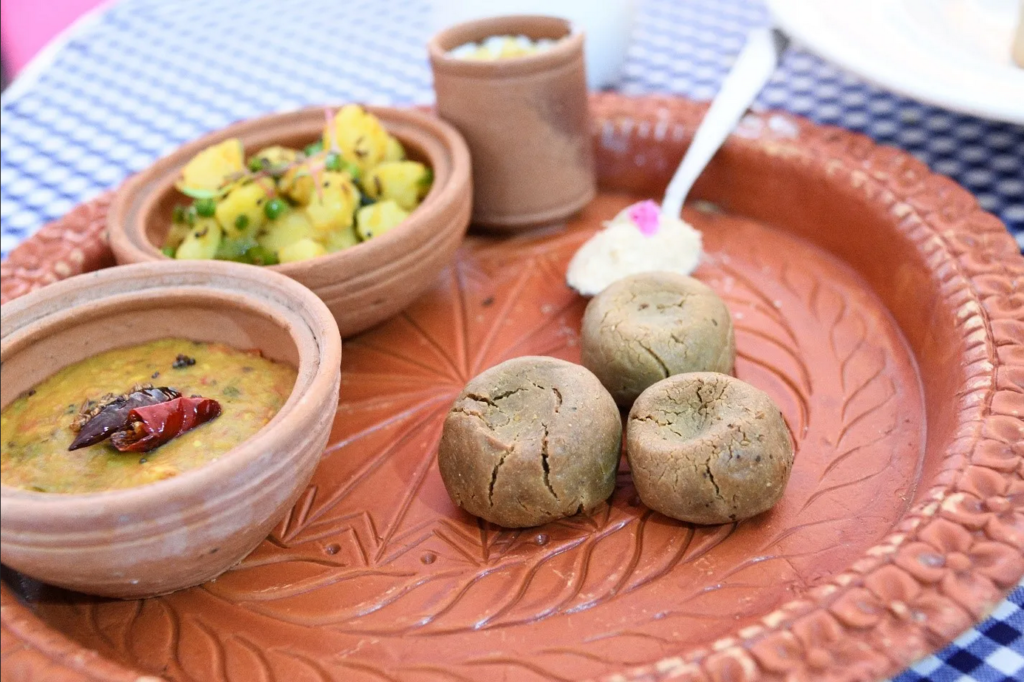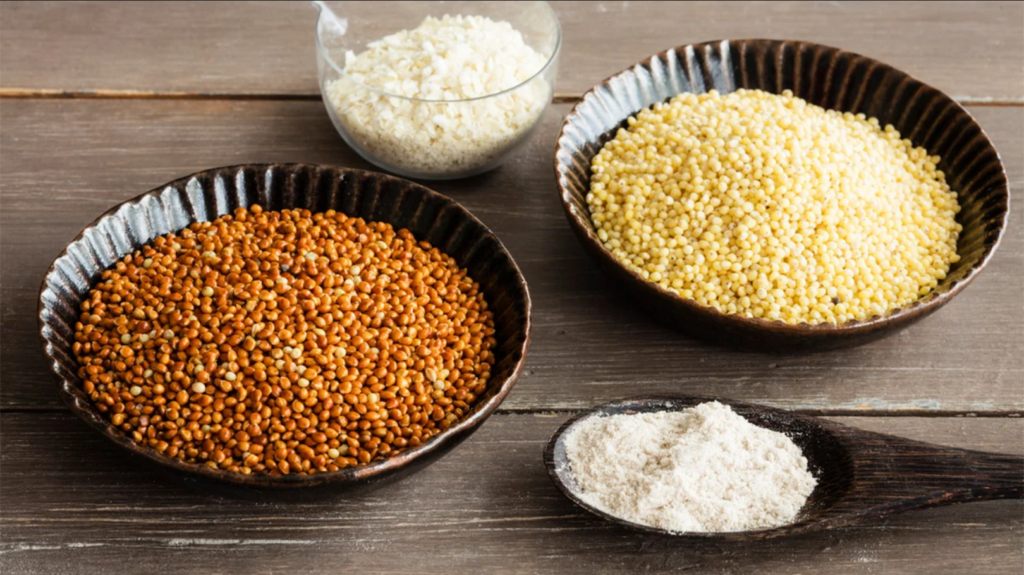Embarking on a millet-based diet isn’t just about incorporating millets into your daily meals; it’s also about finding the right balance in portion sizes and combinations to create a well-rounded and nutritious dish.
As our awareness of portion control grows, the question of “How much millet is too much millet?” often arises. The answer, according to my perspective, lies in observing how your body responds to different grains. This understanding naturally develops over time. Every individual body reacts uniquely to millets, and a recommended approach is to embark on a 10-day millet protocol. This period allows you to document your experiences and discern what suits your body best.

In the spirit of promoting a balanced vegetarian meal with heightened protein content and reduced carbohydrates, I share a delightful platter featuring homegrown beetroot and greens, proso millet chosen for its high protein content, and green moong dal infused with tangy Indian gooseberry (amla).
Here’s a recipe for Green Moong Dal with Indian Gooseberry:

Ingredients (serves 4):
– ½ cup whole green gram
– 4 deseeded and roughly chopped amla (Indian gooseberry)
– 1-inch ginger
– 1 finely chopped green chilli
– 5-6 garlic cloves
– ½ tsp cumin seeds
– ½ tsp coriander seeds
– 1-inch cinnamon stick
– 1 black cardamom
– A pinch of hing (asafoetida)
– ¼ tsp turmeric powder (haldi)
– Rock salt to taste
– 2 tbsp cold-pressed coconut oil
Method:
- Soak the whole moong dal for 12 hours, then drain the water. A well-soaked lentil requires no pressure cooking.
- Heat oil in a heavy-bottomed pan and add raw spices—cinnamon, cumin, and coriander seeds. As they splutter, add heeng, ginger, garlic, and green chillies. Cook until the ginger and garlic turn golden.
- Add soaked dal, chopped amla, salt, and turmeric. Cook for 2 minutes on medium flame.
- Adjust water based on desired consistency. Cook covered on low flame for 10-15 minutes.
- Once the dal is tender, mash amla bits with a potato masher and stir until well combined.
- Garnish with fresh coriander leaves. Enjoy it piping hot with steamed millet or as part of millet bowls.

Health Benefits:
Proso millet, with the highest protein content among millets, also contains lecithin for neural health. It is rich in vitamins (niacin, B-complex, folic acid), minerals (P, Ca, Zn, Fe), and essential amino acids (methionine, cysteine). With a low glycemic index, it reduces the risk of type-2 diabetes.
Green gram is rich in fiber and protein, curbing hunger hormones and aiding digestive health. Whole moong dal protects against heat stroke, promotes weight loss, and lowers LDL cholesterol, blood pressure, and blood sugar levels.